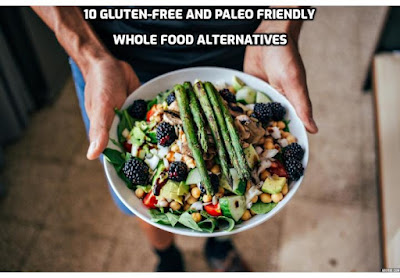Click HERE to Discover these 80 Keto-Friendly and Healthy Slow Cooker Recipes
How to Tell If You Have SIBO & 5 Ways to Fix It
SIBO – short for small intestinal bacterial overgrowth – can wreak havoc on a person’s health if its symptoms are ignored.
A common but dangerous gut problem, SIBO is often misdiagnosed. Here is how to identify SIBO, what foods make the condition worse, and how to start healing.
What Is SIBO?
SIBO literally means “too much bacteria in the small intestine”. While good bacteria are a necessary part of a healthy gut, location matters. Most of our good bacteria should be found in the large intestine and colon, not the small intestine.
The small intestine is, however, the largest part of the digestive tract, where most of the digestion and absorption of nutrients takes place.
When SIBO happens, both digestion and absorption can be interrupted, particularly for nutrients like iron and other fat-soluble vitamins. Symptoms can range from bloating, gas, abdominal pain, diarrhea, or chronic constipation.
These symptoms occur when the bacteria of the small intestine feed on the nutrients that the small intestine is supposed to be sending into the bloodstream. The result is continued bacterial overgrowth where it shouldn’t happen.
When SIBO has been ongoing for a long time, it can actually result in weight loss because the bacteria are consuming too many nutrients and not enough are being absorbed, leading to malnutrition.
It can also lead to unexplained fatigue, aches and pains, and other chronic conditions that can be misdiagnosed in place of SIBO, like IBS (irritable bowel syndrome).
To recap, below are common symptoms of SIBO:
- Bloating
- Gas
- Abdominal pain
- Diarrhea
- Chronic constipation
- Fatigue
- Aches and pains
- Weight loss
- Malnutrition
While SIBO is more common than initially thought, how can it be differentiated from other gut health problems that produce similar symptoms? Leaky gut, IBS, Crohn’s disease, and ulcerative colitis are all diseases and disorders that impact the small intestine, large intestine, and colon, and which may all have some level of overlapping symptoms. Additionally, some patients may have multiple conditions.
SIBO is specifically diagnosed by lactulose breath testing, a method that takes six breath samples over the course of a few hours and analyzes what bacteria are present. In some cases, stool analysis and urine testing may also be done to confirm diagnosis or to get further information.
Bottom line: SIBO is a common condition that can cause overlapping symptoms with many other gastrointestinal disorders.
What Foods Make SIBO Worse/Better?
The bacteria in the small intestine thrive on certain kinds of undigested nutrients, and so in a diet that addresses SIBO, foods that specifically fuel bacterial growth should be avoided. These even include some Paleo foods:
- Starchy flours like arrowroot, tapioca, and cassava
- Starchy vegetables like jicama, parsnips, sweet potatoes, and white potatoes
- Grains
- Sugars, refined or natural
- Alcohol
- Caffeine
- Fermented foods (in some cases)
- Nuts and seeds
Foods that are supportive of symptom management are low in starch and also support gut health and balance.
- Bone broth
- Pastured meats
- Certain vegetables (cooked, low-starch like bok choy, green beans, and lettuces)
- Certain fruits (cooked, low-starch like blueberries, raspberries, and strawberries)
Of course, no one-size-fits-all diet will work; some may be able to tolerate more foods and others may require an even more restricted diet.
Some practitioners will prescribe an elemental diet, which is basically a pre-digested food plan that requires eating no solids for two or three weeks. This is typically a last resort, and is not appropriate for SIBO patients who are losing weight or who cannot keep weight on.
Bottom line: SIBO feeds off starches and sugars, but can be therapeutically addressed with quality low-starch foods that nourish the gut.
How to Treat SIBO
Once SIBO is diagnosed, there are a few common methods for treating it. Diet and lifestyle are important regardless of how SIBO is addressed, but in most cases antibiotics, probiotics, or antibacterial herbs will be used to reduce small intestinal bacteria, and then diet and lifestyle factors are used to prevent regrowth and to help normalize the gut.
Correcting SIBO is not something that happens overnight or in a 21-day program.
SIBO rebalancing can take up to a year or two, and often requires multiple courses of treatment to maintain the rebalanced bacterial structure. Diet and lifestyle help treatment to work, but in most cases, SIBO cannot be rebalanced by diet alone.
A common antibiotic used by many doctors is Rifaximin, which specifically targets the gastrointestinal tract and is not broad spectrum, and which reduces systemic effects of being on an antibiotic.
Other antibacterial and antimicrobial herbs or supplements can also be successful in treating SIBO. Different practitioners may have different approaches, or may tailor each protocol to the individual patient.
Common protocols may include peppermint oil that, when enteric-coated, is potently antibacterial and can help to kill of bacteria in the small intestine. Other successful antimicrobials can include berberine, oregano oil, garlic, thyme, and wormwood in various combinations.
Bottom line: SIBO is very treatable, but requires specific protocols to successfully address it.
5 Ways to Help Heal SIBO
The Paleo diet can easily be modified for SIBO, and that, along with lifestyle factors, can help to manage symptoms and prevent recurrence after treatment has ended.
Thoroughly Chew Food
Most people chew food a few times and then swallow, sending partially chewed food into the stomach, which requires more work from digestive juices to break foods down. A simple step that can easily become a learned habit is to chew food more thoroughly before swallowing. This is especially helpful for harder to digest foods like meats.
Eat Smaller Meals Slowly
Since digestion can be profoundly impacted, eating smaller portions can also help to ensure that complete digestion takes place.
The bacteria that flood the small intestine in SIBO thrive off of incompletely digested starches and carbs, so eating smaller meals gives digestive enzymes a greater chance to fully break down food before it enters the small intestine. Additionally, not rushing through meals can also ensure that food properly digests.
Take Digestive Enzymes
In people with gut issues, sometimes stomach acid is too low to ensure proper digestion. Boosting digestive ability with digestive enzymes or apple cider vinegar can help to further break down food and reduce SIBO symptoms and recurrences.
Avoid FODMAP Foods
FODMAPs (which stands for fermentable oligo-saccharides, disaccharides, mono-saccharides, and polyols) are foods that can feed the gut bacteria in the small intestine and prevent reversal of SIBO or cause symptoms to worsen.
A SIBO diet avoids these, which include foods like grains, onions, legumes, dairy products, sweeteners, and starchy fruits and vegetables.
This category can also include some fermented foods, and while those are typically associated with gut health, they can fuel the bacteria in the small intestine. These foods should therefore be avoided until the bacterial problem is dealt with and remission has occurred.
Eat Gut-Healing Foods
Foods that are great for helping to restore balance in the small intestine include bone broth, collagen, low-starch vegetables like lettuces, green beans, and bok choy, as well as berries. While the SIBO diet is initially limited, other foods can typically be reintroduced after a course or two of a treatment protocol.
So what does a day of eating Paleo for SIBO look like?
Here is an example of what a SIBO eater might consume in a day (note: keep in mind that each person’s individual plan would probably look a little different, since an important factor of eating for SIBO is customizing the plan to each person’s sensitivities and specific needs and conditions).
Meal 1: 12 ounces of bone broth + 2 egg yolks
Meal 2: 4 ounces of wild-caught salmon + 2 cups chard with ½ large carrot + 1 tablespoon olive oil with a pinch of sea salt
Meal 3: 4 ounces chicken + 3 beet slices + ½ cucumber
Meal 4: 4 ounces lamb + ½ cup butternut squash with ghee + sea salt + black pepper
Meal 5: 4 ounces turkey + 1 cup spinach with a dash of apple cider vinegar
Meal 6: 12 ounces bone broth + 2 egg yolks
Watch this video – How I Beat SIBO: My Journey to Health | Rebecca Coomes, The Healthy Gut
Written by Aimee McNew
Author Bio:
Aimee McNew is a Certified Nutritionist who specializes in women’s health, thyroid problems, infertility, and digestive wellness. She ate her way back to health using a Paleo diet, lost 80 pounds, and had a healthy baby after numerous miscarriages. She focuses on simple nutrition practices that promote long-lasting results.
A lot of people have gotten results from the Keto diet, and enjoyed the foods that it has to offer. However, many of the people who are following this diet have a hard time finding the recipes that they need, especially ones that are quick and easy to complete.
Fortunately, Kelsey Ale, noticed this problem, and decided to do something about it. She’s found that making recipes in a slow cooker gives you meals which are not only delicious, but also take very little time to make. Mostly you just put a few simple ingredients in the slow cooker, and let it do the rest.
To find out more, click on – Keto Slow Cooker Cookbook





